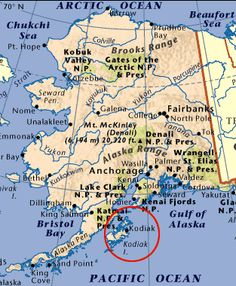 The Alaskan island, with plentiful hydro and wind resources, shows how it can be done:
The Alaskan island, with plentiful hydro and wind resources, shows how it can be done:
Previously overseeing an electrical grid almost entirely supplied by diesel generators, the board of the Kodiak Electric Association made the decision in 2009 to go renewable by 2020 as diesel prices continued to rise.
“We wanted to get off diesel,” association CEO Darren Scott said of the utility’s diesel generators, which used to provide expensive electricity to more than 6,000 residents of Kodiak, the village of Port Lions and the largest Coast Guard base in the country. “Diesel wasn’t going to be a part of our future.”
The switch to a grid run 99.7 percent on renewable resources not only stabilized Kodiak’s electric rates but also brought them closer to the national average. After Hawaii, where the average cost of electricity is nearly 34 cents per kilowatt hour, Alaskans pay the second-highest electric rates in the Untied States, at 17.58 cents. In Kodiak, customers are now paying 13.8 cents per kilowatt hour, just above the national average of 12.5.
The Alaska Renewable Energy Fund, established in 2008, helped fund the transition, which is expected to pay for itself in savings in under a decade. Meanwhile, cutting the diesel generators off reduced carbon dioxide emissions more than 60 percent each year.
Kodiak is setting a great example for other island states like Hawaii to follow. As the concept is proven in these island areas, they will be much easier and less costly to transport to mainland grids.
One thought on “Kodiak Shows How Islands Can Go Full Renewable”
-
Pingback: A 100% Renewable Island In American Samoa | Ethan Elkind
Leave a Reply
You must be logged in to post a comment.


